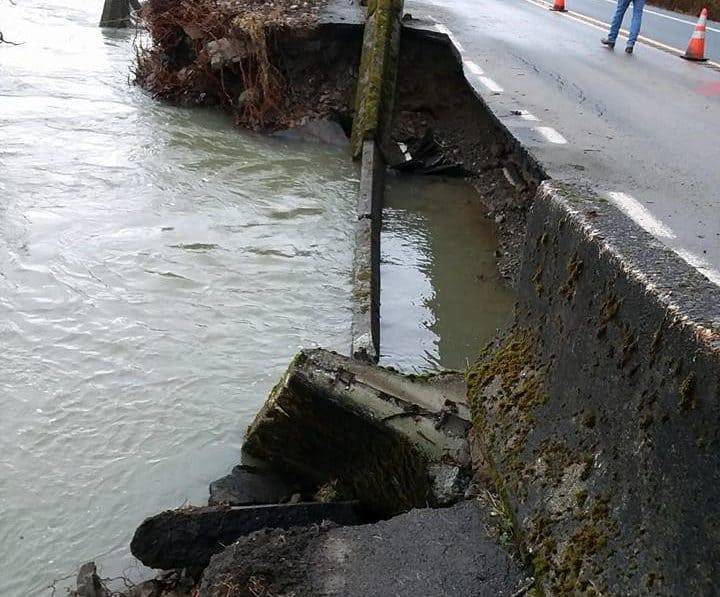
When the Skagit Floods and Diablo Turns Green
In the photo above, WSDOT contractor crews replace washed out riprap to protect and repair State Route 20 along the Skagit River east of Rockport.
WSDOT Word of the Day:
rip·rap
/ˈriprap/
North American
noun
noun: rip-rap
1. loose stone used to form a foundation for a breakwater or other structure.
Have you noticed the washout near Cascadian Farm?
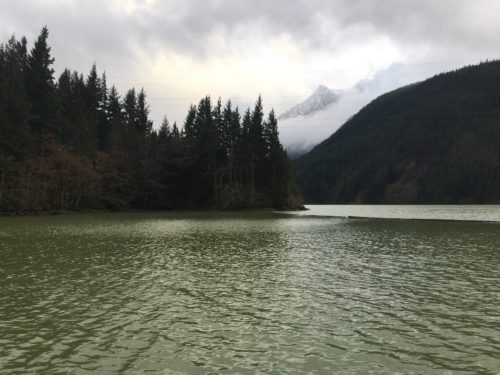
Or the unusual color of Diablo Lake?
Last week the Skagit River rose to a high of 34.69 feet, according to the U.S. Geological Survey gauge in Concrete. The highest levels of flooding since 2006, according to the National Weather Service. Flood level is 28 feet.
What was originally forecasted to be minor flooding became major flooding throughout Skagit County, causing significant property damage and road closures.
In an article by the Skagit Valley Herald, hydrologist Brent Brower and reporter Kimberly Cauvel discussed reasons why the flooding was higher than expected.
It’s possible that rain and snowmelt combined, leading to a larger event.
“Rain on snow is not going to be the cause of a flood, but the snowmelt we get can contribute,” Bower said.
Following heavy rain early in the week, Wednesday brought record warm temperatures that reached 68 degrees in Seattle and Bellingham.
“There was at least a 36-hour period that was warmer than normal, maybe the warmest ever,” Bower said.
That may have melted some low elevation snow.
To read more about details of the event, and communities impacted, click here for the full article.
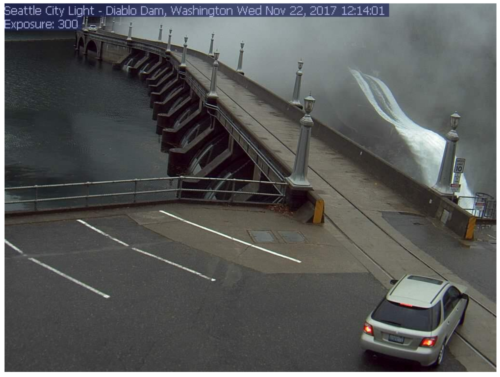
On Wednesday, November 22, the view of Diablo from the Seattle City Light cam was still the typical gray color of winter.
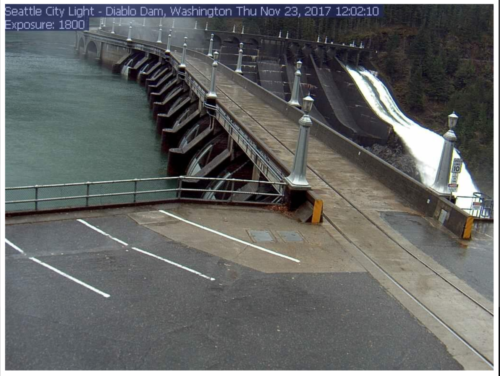
On Thanksgiving, the day of the big flooding event, Diablo became greener.
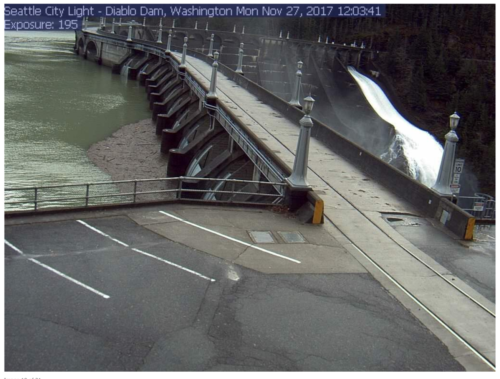
When graduate students and staff returned to the Environmental Learning Center on Monday, the lake was shockingly green with apparent, trapped sediments.
Photo’s courtesy of Newhalem’s Cam Archive
With all of this in mind, why do you think Diablo Lake turned a hue of green? I took the picture below from a dock at the Learning Center. Looking toward the shoreline, it became obvious the water was full of muddy sediments. I posed this question to community members at the ELC, and their answers were varied.
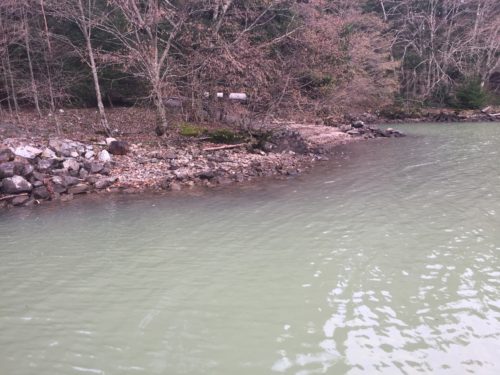
“It’s green from the rangers washing their pants in the lake.”
“All the green material that suddenly got washed in.”
“The lake is currently that darker green because it is a mix of so much silt/mud as well as glacial flour from our past big rainstorm.”
“Because.”
“Mud got washed into the lake, and some of the sediments were the green rock olivine.”
“I assume that the warm temps and rain on snow created some glacier melt and added glacial flour to the mix.”
What are your musings on what happened? Feel free to comment below.
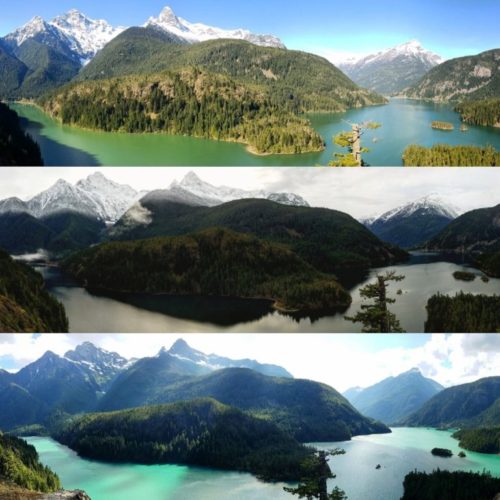
Diablo Lake from the overlook off Highway 20; photo by Angela Burlile
Above is a beautiful collage from Angela Burlile’s Photo Roundup from May 14, 2017. In her post, she explains why Diablo Lake changes color throughout the seasons.
The North Cascades Institute Environmental Learning Center is right on the shore of Diablo Lake and it has been a fun little practice of watching it slowly change with the seasons. Much of the water in this lake is fed by glaciers in Thunder Creek Basin. Skagit gneiss (a rock that contains the mineral olivine) or as we tell Mountain School students, ‘glacial flour’, is eroded by ice and flows down glacial streams, entering Diablo Lake. As the sun hits these tiny rock particles suspended in the lake, they reflect off this beautiful jade green color. In the spring and summer when runoff is higher, the lake gets brighter! The top photo is from this past week, the middle photo from December and the bottom photo from last July.
So we have glaciers to thank for its surreal, turquoise blue! This recent phenomenon makes me wonder about glacial melt, and if that did indeed happen from the warmer temperatures and abnormally warm rains. How often are glaciers impacted by snowmelt and warm rains in the winter months?
…Maybe it’s time to consult an expert. (Jon Riedel, are you reading this?)
(Top photo) Courtesy of WSDOT North Twitter. Photo of damage taken just east of where the major road rebuild/reroute from a couple years ago ended.


No huge mystery. The normal emerald green color is because of the SIZE of the particles of rock, not what the rock is made of. Glaciers grind the rock into tiny particles smaller than sand grains – silt! That’s why they call it glacial “flour!” Flour is tiny powder particles, too. The tiny silt particles are suspended in the Lake water and white sunlight that falls on it is ‘diffracted’ by the tiny particles. Look it up! Diffraction is at least as fun as watercolors and poetry! The SIZE of the particles happens to be about the same as the wavelength of blue-green light. So it works like a prism. And when a huge rainstorm hits, the glacial flour is diluted by the runoff so it’s diffraction effect is reduced for a while, and the lake (reservoir, actually) turns green instead, as It would look if it weren’t fed by nearby glaciers. After climate change has melted all the big Cascade glaciers, whattya bet ol’ Diablo will be green all the time! So you’re seeing a preview of the post-glacial Cascades to come.
Wow. Thank you for your informative input! Great context for what is going on.